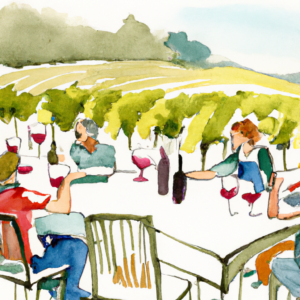Palate, in the context of wine, refers to a person’s sense of taste and the ability to distinguish and appreciate different flavors and textures in wine. It is an essential aspect of wine tasting and enjoyment.
When it comes to wine, palate means your ability to taste and enjoy the different flavors and textures in wine. Your palate is made up of taste
receptors on your tongue and the roof of your mouth, as well as your sense of smell. While your tongue can only detect five primary tastes, wine has lots of different flavors and characteristics that require a more refined palate to appreciate.
People who work with wine, like

sommeliers and wine critics, often have well-trained palates, which help them pick up on subtle differences between wines. To develop your palate, you can practice wine tasting by trying different types of wine and paying attention to details like acidity and aroma.
When you taste wine, there are three main things your palate experiences: taste, texture, and aroma. Taste is what your taste receptors on your tongue pick up, like sweetness or bitterness. Texture is how the wine feels in your mouth, including things like tannins, acidity, and alcohol. Aroma is what you smell and can affect how you taste the wine.
Remember that everyone’s palate is different, so what you like in a wine might be different from someone else’s preferences. But by paying attention to the appearance, aroma, and flavor of wine, you can improve your ability to enjoy and understand different types of wine.
The current oldest bottle of wine in existence in the world dates back to 325 AD and was found in Germany.
Tags, Tags, #hashtags, Tags